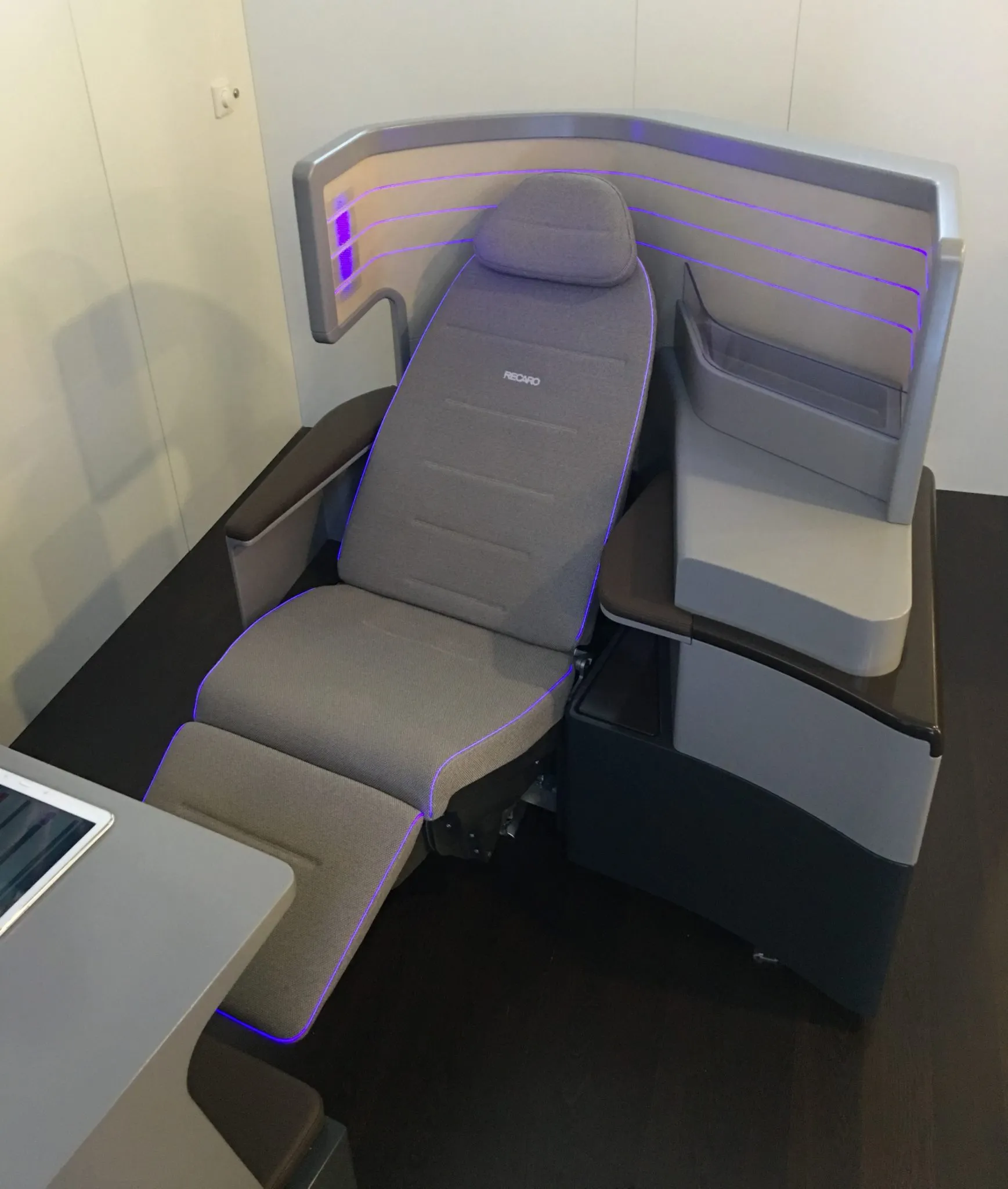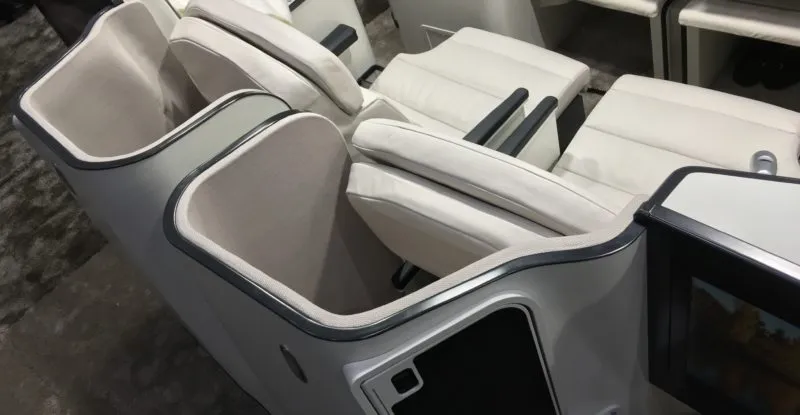 Some years we see cataclysmically new products at the Aircraft Interiors Expo in Hamburg. Other years, it is a year of incremental improvements. This year was definitely one of those latter years.
Some years we see cataclysmically new products at the Aircraft Interiors Expo in Hamburg. Other years, it is a year of incremental improvements. This year was definitely one of those latter years.
Stelia’s new optional extra-length addition on its staggered, fully flat bed with direct aisle access Solstys product, for example, which has often faced the issue of centre seats in particular feeling constricted.
Zodiac’s new, hopefully more reliable SKYlounge III — also a staggered, fully flat bed with direct aisle access product — which is made of fewer different part numbers, hopefully leading to fewer design delays and contract cancellations for the seatmaker.
Further incremental updates to Stelia’s Celeste sliding recliner product, which I’m told now has a customer.

Recaro’s business class seat innovations this year were evolutions on the CL6710 product. Image: John Walton
Bells and whistles updates to Recaro’s CL6710 — yet another staggered, fully flat bed with direct aisle access — with individual temperature control, lighting and so on.
Sometimes this feels like bells and whistles. But often it is a significant small change that turns a good seat into a great seat — the numerous improvements that Cathay Pacific and JPA Design made to the Zodiac (then Sicma) Cirrus seat, which had debuted in a more factory stock model on US Airways.
Or expanding the foot cubby area of a Thompson Vantage staggered fully flat bed (with or without direct aisle access, depending on aircraft and cabin cross-section) by moving the table away from the footwell area.
From a certification perspective, the incremental approach ought to reap benefits as well, with fewer hurdles to jump over.
This is not, however, always the case, and it seems particularly not to be the case with herringbone products. Stelia explained to me that its Comet product was well received by airlines — as it should have been, because it was a very good late-mover in the herringbone sphere — but that it lost out to other products, both herringbone and non-herringbone, because it had not yet been certified.
Other herringbone seats that I was shown behind closed doors, last year and previously, have not materialised in the flesh (or in the thermoplastic).
B/E Aerospace had significant problems certifying the Virgin Australia implementation of its Super Diamond reverse herringbone seat at an increased angle from the centrerline of the aircraft, something that I understand that Zodiac was able to achieve earlier than B/E.
At its recent first half earnings call, Zodiac opened up more about issues with certifying the “dynamic shell” on the latest version of its Cirrus seat, citing the complexities of innovation. I understand this is due to the twist requirement from certification authorities.
Zodiac won’t have killed the golden goose that is its Cirrus product, but in the current climate, if it can’t certify it then airlines in the market for aureus avians are going to look elsewhere.
Given the ongoing certification problems seatmakers are causing for airlines, it wouldn’t surprise me if we started to see carriers more reluctant to invest in new seats and seat types, and more airlines insisting that base models for seats are pre-certified before they sign on the dotted line if they do choose something new.
And I certainly expect to see more incremental improvement years at AIX in the future.













